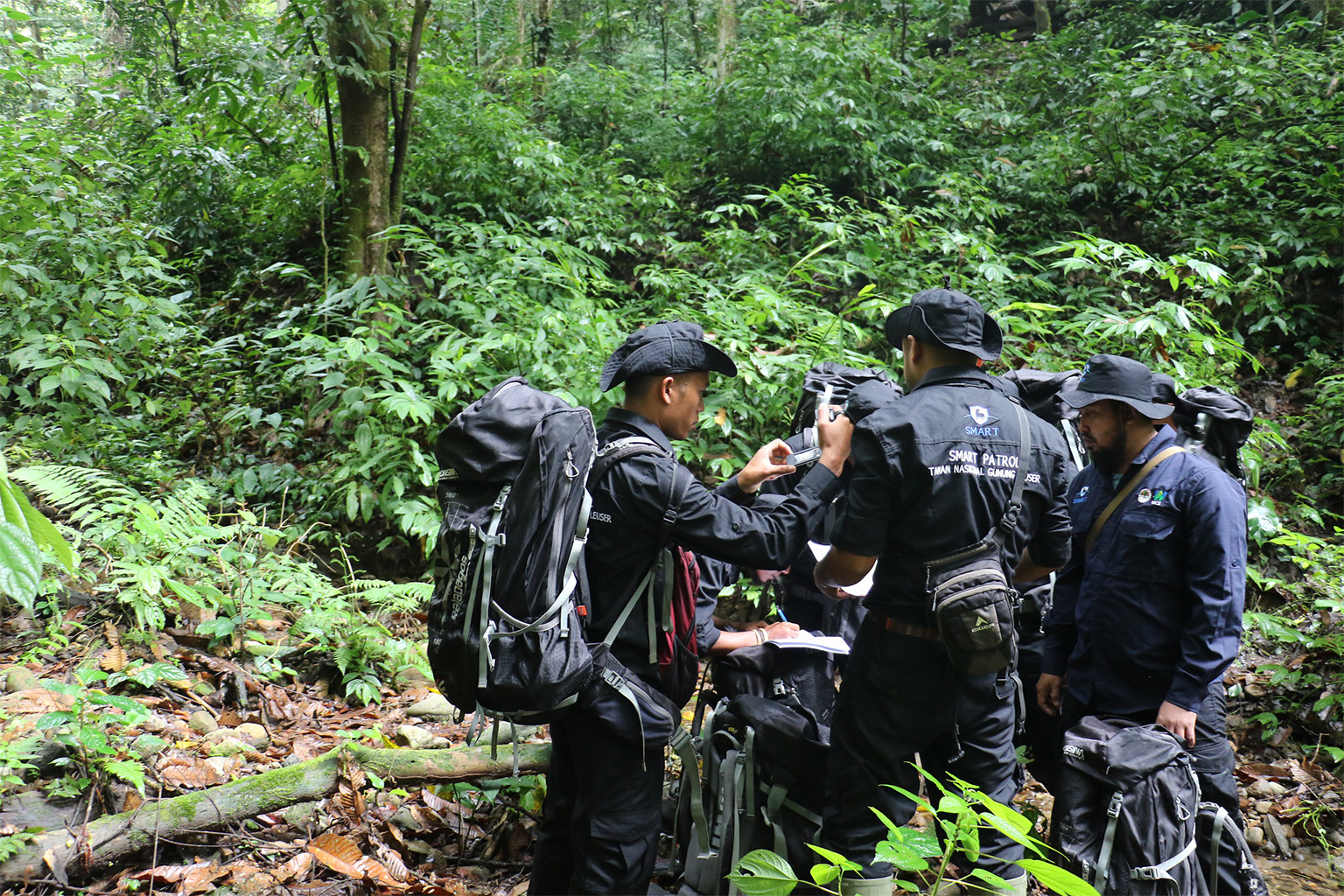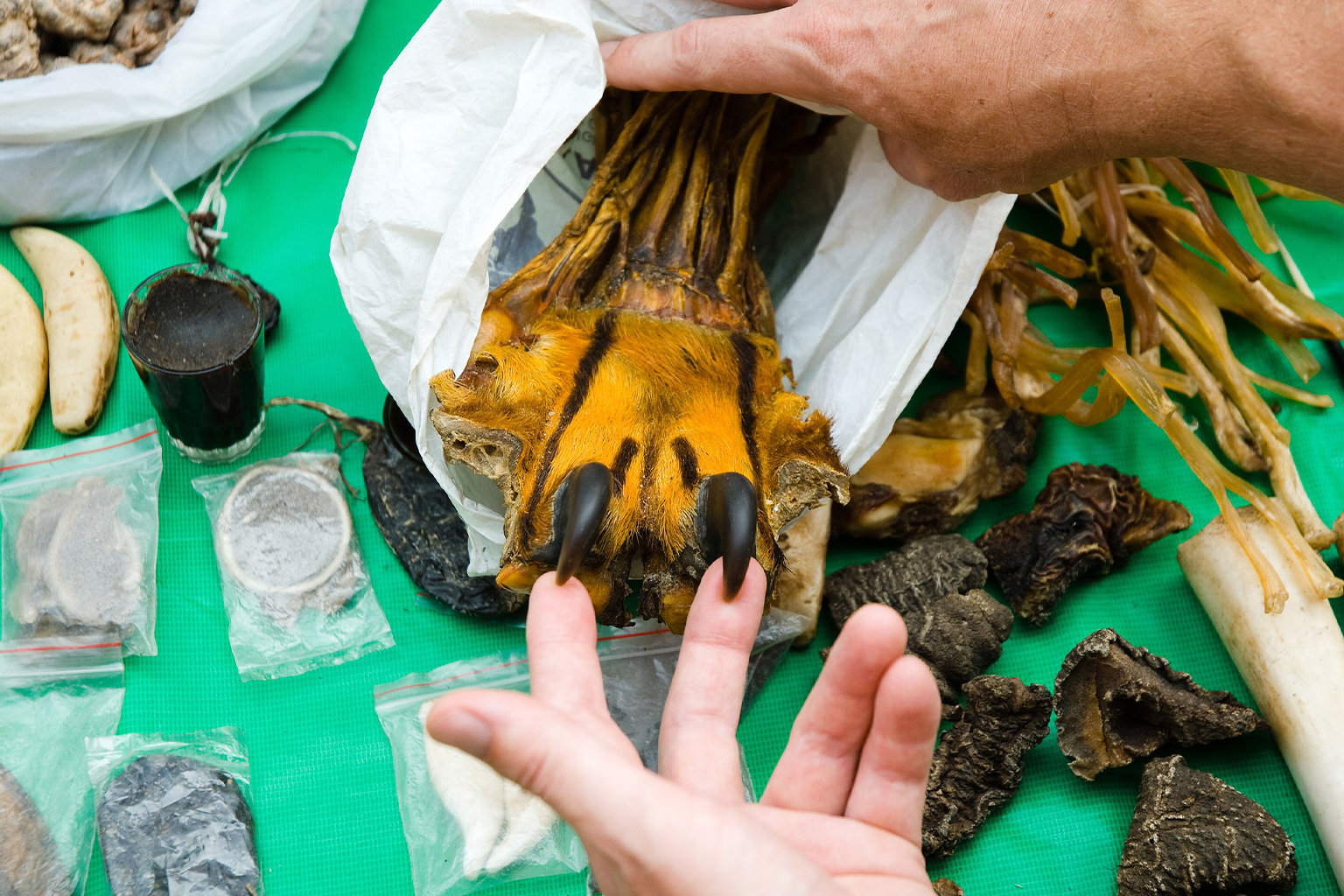- The Bangladesh Forest Department has introduced a Spatial Monitoring and Reporting Tool (SMART) to help stop wildlife trafficking in several of the country’s protected forest areas.
- The pilot program follows the success of SMART technology used in the world’s largest mangrove forest, the Sundarbans, where a University of Calcutta study shows illegal logging and poaching have dropped significantly since the introduction of the tool.
- According to the Wildlife Conservation Society, major gaps in information about wildlife trade chains hamper the government’s ability to stop wildlife crimes.
- Experts say SMART patrolling should be introduced in protected forest areas across the country.
For years, authorities in Bangladesh have struggled to rein in the rampant illegal wildlife trade, as the country serves both as a source and transit point for domestic and international trade in a significant number of globally endangered species and their body parts. Trafficking routes often extend to China, India and Myanmar.
Now, a patrolling system using a Spatial Monitoring And Reporting Tool (SMART) introduced by the Bangladesh Forest Department (BFD) appears to have potential for finally helping the country bring down trafficking.
SMART has been used in the world’s largest mangrove forest, Sundarbans, in four ranges — Satkhira, Khulna, Chandpai and Sarankhola — since 2017. Experts say the technology should be extended to all of the country’s forests in the long run.
“Using Geographic Information System (GIS) technology, the toolkit allows protected areas and wildlife managers to better monitor, evaluate and manage patrolling activities,” said Abu Naser Mohsin Hossain, the divisional forest officer of the Sundarbans West Division.
According to a study by the University of Calcutta, the crime rate in the Bangladesh part of Sundarbans has declined significantly since the introduction of the SMART patrolling system.
The SMART software makes it possible to collect, store, communicate and analyze ranger-collected data on illegal activities, biodiversity, patrol routes and management actions to understand where efforts should focus and to evaluate ranger performance.

When used in combination with CyberTracker, a mobile data collection app, it permits automated field data collection, analysis and reporting and is fully customizable by local users.
It strengthens the ability of the BFD to strategically plan and execute a response to combat illegal activities and prioritize resources through the patrolling data.
“The wildlife habitats are being enriched through biodiversity conservation as a result of this project,” the study added.
“This toolkit has been used in more than 70 countries around the world. Each year, we patrol 65,000 kilometers [40,400 miles] within the forest using this tool set,” said Hossain, adding, “illegal logging and other irregularities in the forest have come to an end. Deer poaching has reduced significantly.”
The menace of wildlife trade in Bangladesh
The BFD in 2012 formed the Wildlife Crime Control Unit (WCCU) to prevent wildlife trafficking. Between 2012 and October 2021, the unit rescued more than 37,000 wild animals and birds. They also identified at least 1,368 wildlife crime-related offenses but filed only 111 cases and arrested 157 offenders.
According to a Wildlife Conservation Society (WCS) report, major information gaps in wildlife trade chains hamper the ability of government agencies to combat crimes.
The report said a domestic trade route for the pet market, which includes hornbills, mynas, parrots and bear cubs, extends from the Bandarban district, near the border with Myanmar, to Dhaka.
The international trade route for pangolin scales, skins and bones of wild cats extends from Bandarban to Myanmar, while trade routes for freshwater turtles from Chittagong and Sylhet divisions run to the states of Assam and Meghalaya in India, and from India’s West Bengal state to Bangladesh.
“A vigorous trade in shark fins also takes place from Chittagong and Cox’s Bazar by boats traveling to the Myanmar border near Teknaf and then transferring to vessels from Myanmar, for transport to Yangon and onward to China,” the WCS report said.
Acknowledging the WCS report, WCCU head Sanaullah Patwary said hunting and consumption of wild animals are deeply rooted in the history of this region.

“Some people of tribal communities are historically inclined towards wild animal consumption. However, the situation has changed a lot nowadays due to different government initiatives, but it may take a while to eliminate such hunting completely,” Sanaullah added.
He further said WCCU officials are not empowered to arrest offenders according to the law, and they require assistance from the local administration and law enforcement agencies to carry out investigations and take legal action.
He further said there was no government survey or data on international rings using Bangladesh as a source country or transit point.
Scaling up SMART patrolling in protected areas
Although the toolkit has previously been used in the mangrove forest, it has not covered the country’s plain land forests or hill forests.
Now, the BFD, in collaboration with the U.N. Food and Agriculture Organization (FAO) and the International Union for Conservation of Nature, has developed a SMART patrolling toolkit for these types of forests.
According to FAO, the toolkit was prepared after surveying four protected areas: Fashiakhali Wildlife Sanctuary, Medhakacchapia National Park, Himchari National Park and Sheikh Jamal Inani National Park.
“The success of the SMART toolkit is quite visible in the Sundarbans. However, it is still being implement as part of a project, which needs to become sustainable,” said Monirul Hasan Khan, a Professor of Zoology Department at Jahangirnagar University.

Urging the government to scale up the use of this innovative forest management toolkit, he said with this patrolling system, forest officials become more empowered and can work independently without having to negotiate with local criminals.
“In traditional patrolling, the staff have to navigate influential locals who are themselves involved in poaching or illegal trading. This also impacts the ability to generate good quality information on observations or threats,” he said.
“SMART produces accurate data and maps about logging, poaching and other wildlife crimes,” Khan added.
Amir Hosain Chowdhury, the chief conservator of forests, said the government plans to introduce the SMART patrolling system, and a national strategy on forest conservation is in progress.
“Our experiments with SMART patrolling in Sundarbans produced noteworthy positive results. However, we cannot do it right because of a shortage of logistical resources,” he said.
Forest officials said SMART is an expensive method, as it requires trained staff, vehicles, weapons and other gear.
Banner image: A tiger in the Sundarbans. Image by Kaushik Ghosh via PixaHive (Public domain).
Related reading:
Can conservation technology help save our rapidly disappearing species? | Problem Solved
Citations:
Pail, D. K., Zaman, S., Mitra, A. (2020) Impact of Spatial Monitoring And Reporting Tool (SMART) Patrolling System for Protecting the Natural Resources of Sundarbans in Bangladesh. H.S.R.A PUBLICATIONS. https://www.researchgate.net/publication/343536938_Impact_of_Spatial_Monitoring_And_Reporting_Tool_SMART_Patrolling_System_for_Protecting_the_Natural_Resources_of_Sundarbans_in_Bangladesh
Wildlife Conservation Society Bangladesh Program. (2018). Combating Wildlife Trade in Bangladesh: Current Understanding and Next Steps. Retrieved from https://library.wcs.org/doi/ctl/view/mid/33065/pubid/DMX3450400000.aspx
